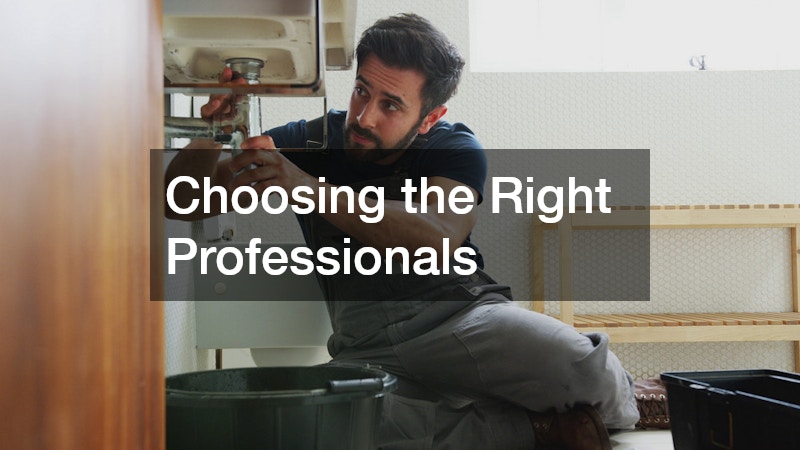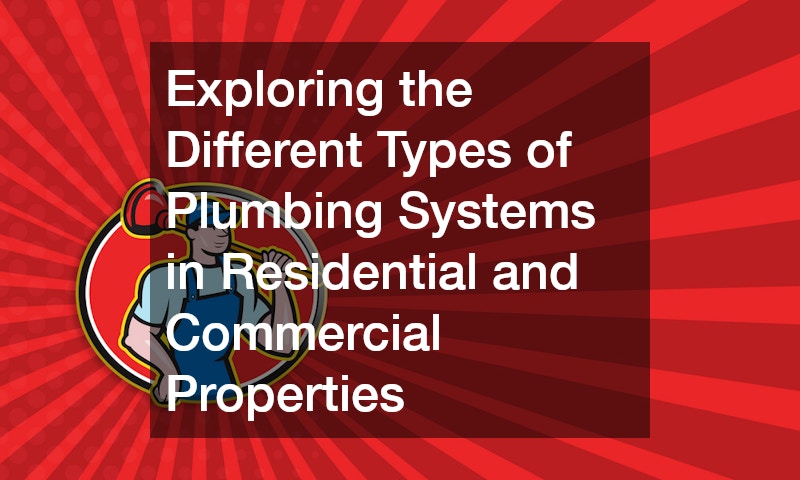Plumbing systems are essential components of every building, ensuring the smooth delivery of clean water and the efficient removal of wastewater. Whether in a home, office, or industrial facility, these systems form the backbone of modern sanitation and water supply. There are several types of plumbing systems, each designed to serve a specific purpose. In this article, we’ll break down the main plumbing systems found in both residential and commercial properties and explain how they function.
1. Potable Water System
The potable water system delivers clean, drinkable water to your sinks, showers, appliances, and fixtures. This system typically connects to a municipal water supply or a private well.
Pipes, valves, and fittings carry water throughout the building, controlled by pressure regulators and shutoff valves.
In most modern systems, copper, PEX, or CPVC pipes are used due to their durability and safety for drinking water. A water meter monitors usage, and a main shutoff valve allows homeowners or facility managers to stop water flow in case of maintenance or an emergency.
2. Sanitary Drainage System
This system is responsible for removing wastewater from your home or building. Every time water flows down a drain — whether from a toilet, sink, or shower — it enters the sanitary drainage system. Wastewater travels through a network of pipes, eventually exiting into a municipal sewer line or a septic tank.
To ensure smooth flow and prevent clogs, proper slope and venting are crucial. Vent pipes allow sewer gases to escape and maintain air pressure, which helps water flow efficiently through the system.
3. Stormwater Drainage System
Separate from the sanitary drainage system, stormwater systems manage rainwater runoff from roofs, driveways, and other exterior surfaces. Downspouts, gutters, catch basins, and underground piping collect and direct rainwater away from the property.
In urban areas, stormwater is often channeled into public storm drains that lead to natural water bodies, while in rural settings, it may be diverted into soakaways or retention ponds. A well-designed stormwater drainage system helps prevent flooding and water damage.
4. Vent System
The vent system, although not often visible, plays a critical role in maintaining air pressure and allowing wastewater to move freely. Without proper venting, plumbing traps could be emptied, allowing dangerous sewer gases to enter the building. Vent pipes usually run vertically and exit through the roof, ensuring that air flows into the system.
Vents also prevent vacuum effects that could disrupt the flow of water or pull water out of fixture traps. If you experience slow drainage or gurgling sounds, your vent system might be partially blocked.
5. Sump Pump System
This system is common in homes with basements or areas prone to flooding. A sump pump is installed in a pit at the lowest point of the basement. When groundwater or excess rainwater collects in the pit, the pump activates automatically and removes the water through a discharge pipe.
This system is vital for preventing water damage and mold growth, especially in regions with high water tables or frequent storms.
6. Hot Water System
The hot water system consists of a water heater and a network of pipes that distribute heated water to various fixtures. Water heaters can be tank-style or tankless, powered by gas, electricity, or solar energy.
A hot water recirculation loop may be installed in larger properties to provide instant hot water and reduce water waste. Proper insulation of hot water pipes can also help maintain temperature and improve energy efficiency.
7. Greywater System
Greywater systems recycle water from showers, sinks, and washing machines for non-potable uses like irrigation or toilet flushing. These systems are gaining popularity for their environmental benefits and help reduce overall water consumption.
Greywater must be properly filtered and treated before reuse to prevent contamination. Installing a greywater system requires careful planning and adherence to local codes, often handled by the best plumbing company familiar with sustainable building practices.
8. Irrigation System
While technically part of exterior plumbing, irrigation systems are crucial for landscaping and lawn care. These systems include sprinklers, drip lines, and controllers that automate watering based on schedules or weather conditions.
Backflow preventers are essential components of irrigation systems, keeping water from reversing flow and contaminating the potable supply.
Choosing the Right Professionals
Installing or maintaining any of these systems requires expertise and knowledge of local building codes. Whether you’re dealing with a simple drain issue or planning a complex renovation, hiring the best plumbing company ensures your system is safe, efficient, and long-lasting.
Professional plumbers not only have the technical skill to handle various systems, but they can also help with upgrades, water-saving features, and compliance with environmental standards. Their role is especially important in commercial settings where multiple systems must work together flawlessly.
Plumbing systems are more than just pipes and fixtures—they’re intricate networks designed to support health, hygiene, and convenience. From potable water to storm drainage, each system plays a unique role in your property’s overall functionality. Recognizing these different systems can help homeowners and property managers make informed decisions when repairs, replacements, or upgrades are needed.
Whether you’re building a new home, remodeling a bathroom, or addressing drainage concerns, relying on experienced professionals from the best plumbing company can make all the difference. Properly installed and maintained plumbing systems are vital for everyday living—and peace of mind.

